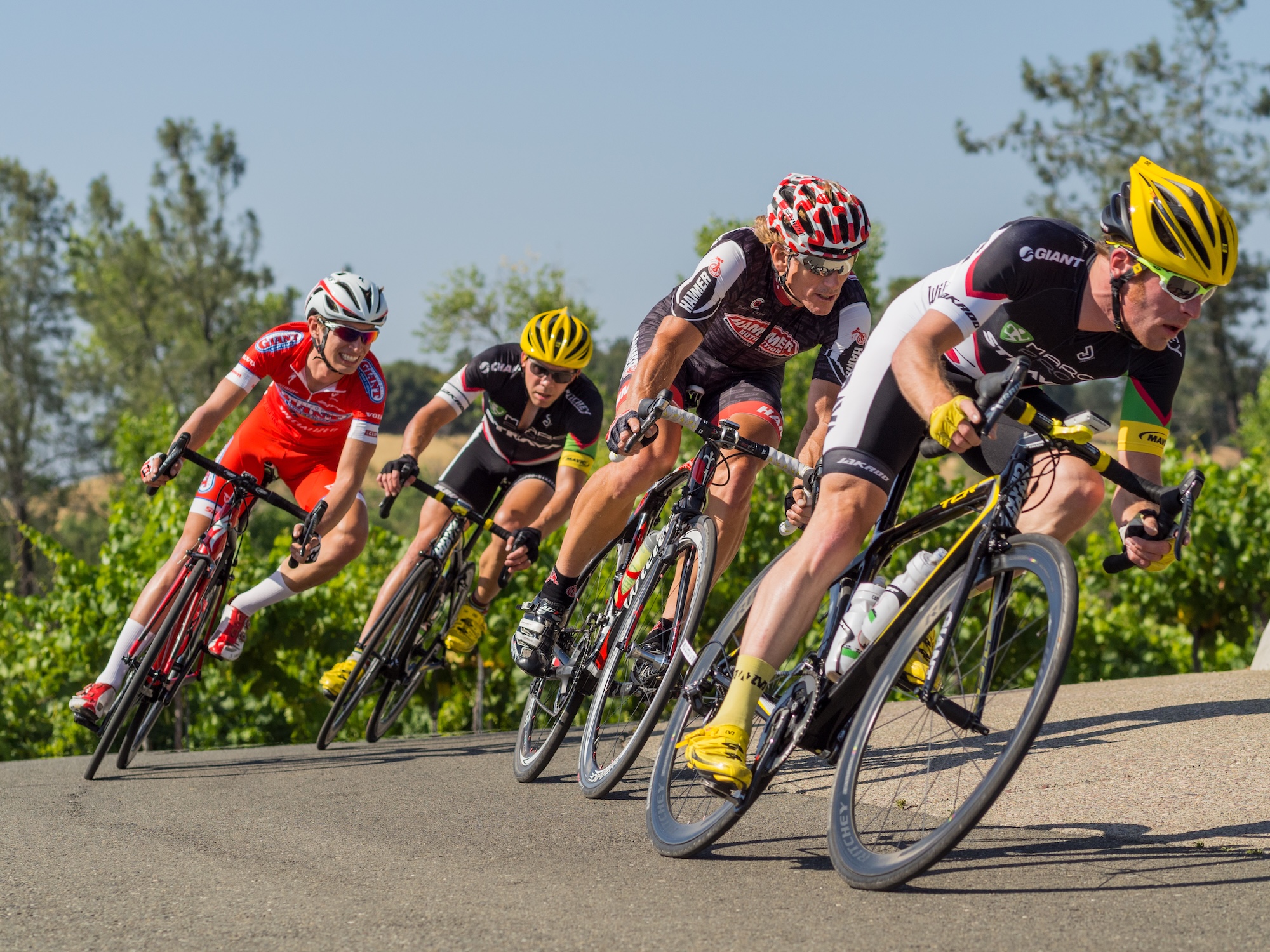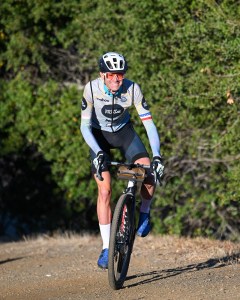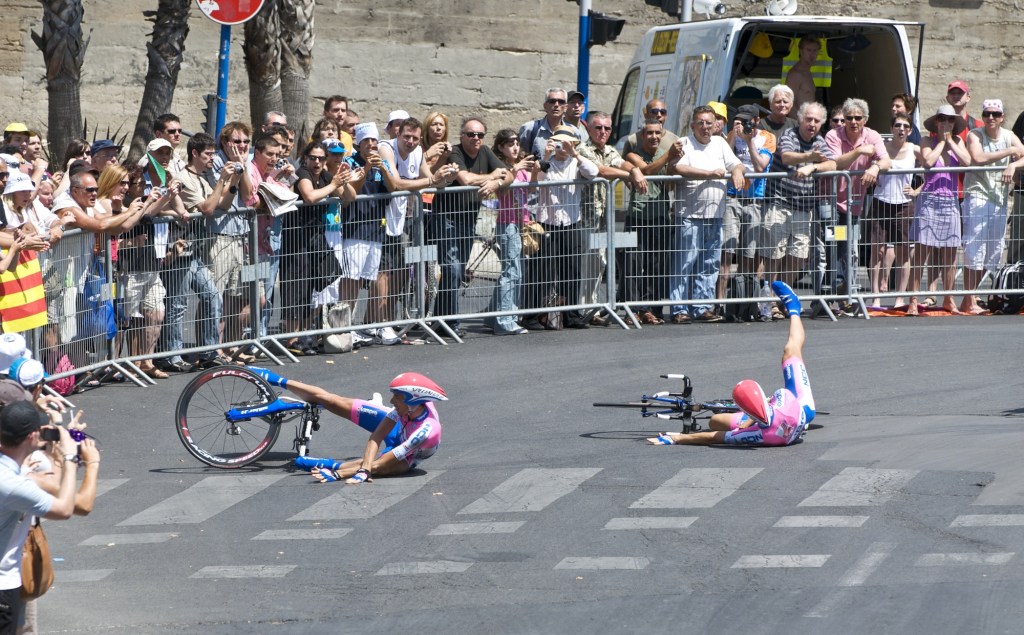Why Do Cyclists Shave Their Legs?
Does it make you faster—or just help you fit in? We asked four cycling experts what leg-shaving actually does for athletes.

Cyclists compete in the men's Sierra de Montserrat Circuit Race in California in 2014. Credit: Paul Higley, Shutterstock
Watch any pro cycling race and you’ll see it: cyclists with smooth, shaved legs. It’s one of the sport’s most visible habits.
Some say it makes them faster. Some point to massage, wound care, or team culture. But does shaving your legs actually make a difference?
A sports physicist, a biomechanics expert, an Olympic medalist, and a former pro cyclist explain why this long-standing ritual still shows up at the starting line.
Dr. John Eric Goff is a physicist who studies sports performance. This fall, he’ll join the University of Puget Sound in Tacoma, Washington, as a visiting assistant professor. He’s been modeling Tour de France stages since 2003 and says even tiny changes—like rider position or leg hair—can affect speed.
“If you’re going about 30 kilometers an hour, which is something like 19 miles an hour, you can get somewhere between 4 to 5 percent lower drag,” he says, referencing a 2014 wind-tunnel study by Specialized, a cycling company known for testing aerodynamics.

That’s about 5 watts of energy saved. This refers to a reduction in power output needed to maintain the same speed, not per a specific unit of time, but as a constant reduction in required effort. A decrease of 5 watts isn’t much per pedal stroke, but it adds up over hours. Over a 40-kilometer ride, it could shave off 30 to 60 seconds.
At higher speeds, savings grow to 10 to 15 watts. That means a rider can go the same speed with less effort, or go faster with the same power. Triathlete Lionel Sanders did a similar wind-tunnel test last year in Germany. After shaving his legs and arms, he saved 13 watts, translating to 53 seconds in a 40-kilometer time trial.
“That can be substantial over the course of a stage,” Goff says. In many multi-day races like the Tour de France, a stage is one day of racing, and every bit counts.
In a “shaved legs” test, Specialized recorded speeds for Jesse Thomas, a professional triathlete from Bend, Oregon, under different conditions. “They happened to find that the leg shaving saved the highest number of watts in the power output,” Goff says.
In other words, he says, removing leg hair reduced drag more than any other tweak—more than helmets, wheels, or body position.
Not everyone is convinced. Bob Prichard, 81, of Tiburon, California, is a biomechanics specialist who has worked with Olympic athletes for more than four decades, and he doesn’t shy away from saying so: “The athletes I’ve worked with have won 44 gold medals,” he says.
Prichard, president of Somax Performance Institute, says shaving might offer a small benefit, but it’s not where the biggest gains come from.
He says cyclists should pay more attention to how their bodies move, how flexible they are, and how efficiently they breathe. In his work, he often sees tight chest muscles that limit how much air athletes can take in.
One rider he trained couldn’t stay with the lead group on a mountain climb. After a few weeks of targeted flexibility work, the rider’s chest expansion grew from 1 inch to 5 inches, enough to change his performance entirely. “He rode everybody into the ground,” Prichard says.
To Prichard, shaving is cosmetic. Better flexibility wins races.
Olympic track cyclist Dotsie Bausch, of Irvine, California, says riders will do just about anything to gain an edge. In her event, races happen in a velodrome, a steeply banked oval where aerodynamics matter most.
Now 52, Bausch started cycling at age 26, during recovery from an eating disorder. She won a silver medal at the 2012 London Olympics, just shy of her 40th birthday, making her the oldest competitor in her event.

She says that while smooth legs can offer speed gains that make a difference for elite athletes, there’s another practical benefit. “Healing from road rash is significantly less messy and nicer if you don’t have hair involved in that wound.”
Bausch was more focused on recovery between rides, though, and credits her long career to treating plant-based nutrition as seriously as training.
Phil Gaimon, 38, is a former professional cyclist based in Los Angeles. He raced from 2009 to 2016 and now organizes events, creates content, and advocates for clean sport. He shaved his legs throughout his career, but not because of the science.
“I don’t think I ever actually tested it,” he says. “It was just one of those things where if you didn’t do it, people would talk.”
He remembers showing up to a group ride without shaved legs. “It was just like, ‘Who’s this guy?’” he says. “They’re not going to say it, but everyone’s thinking it.”
For Gaimon, it wasn’t a race-day ritual so much as a seasonal habit. “You start doing it in the spring,” he says. “And then you stop in the fall, and by then you forget how annoying it is.”
For him, it stuck because of the message it sent. “It’s a social indicator,” he says. If your legs weren’t shaved, people might assume you were a beginner or not serious about riding.

If a young cyclist stopped him on campus and asked whether shaving their legs was worth it, Goff would probably say it’s worth trying.
“If you’re an amateur and you’re not quite at the point where you care about time, your main concern is probably comfort,” he says.
But for racers chasing every watt, even small gains can matter. “All kinds of little, tiny things can go into making a 16-second difference,” he says.
Even as a performance skeptic, Prichard acknowledges that shaving might “make cyclists feel better.”
In a sport built on tradition, Gaimon says feelings and expectations still shape what riders do. He says for cyclists, shaved legs signal speed, recovery, identity—and maybe even a slight edge.
Tanya Bricking Leach is a freelance journalist who writes about science, health, and travel.